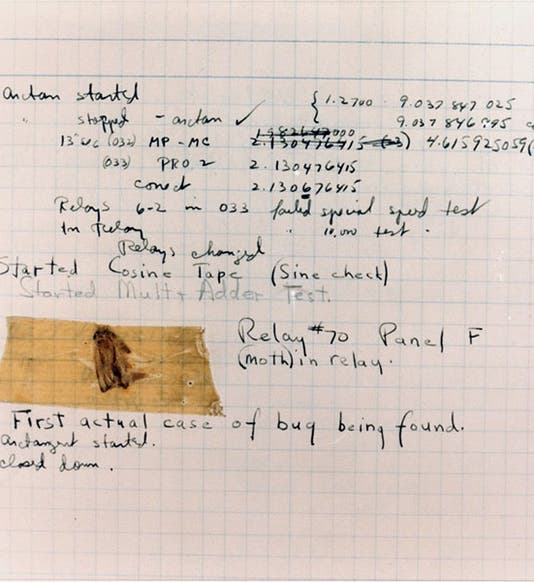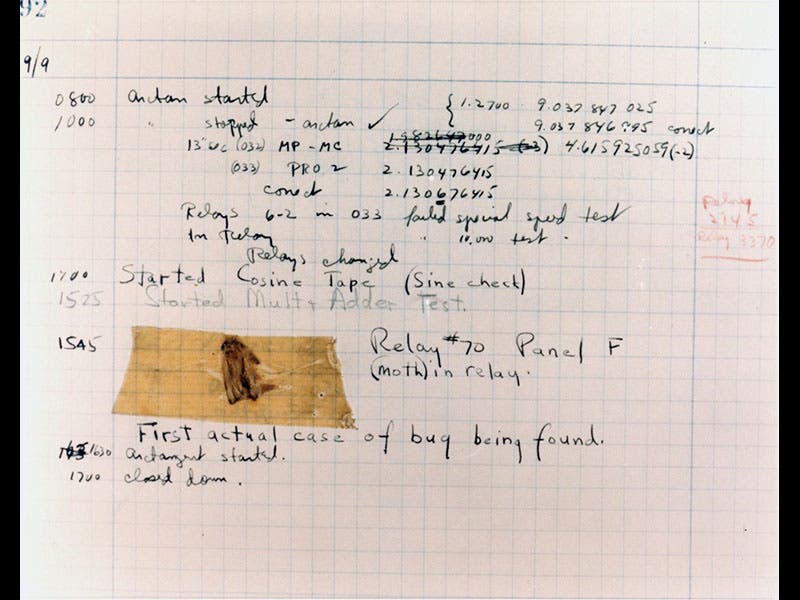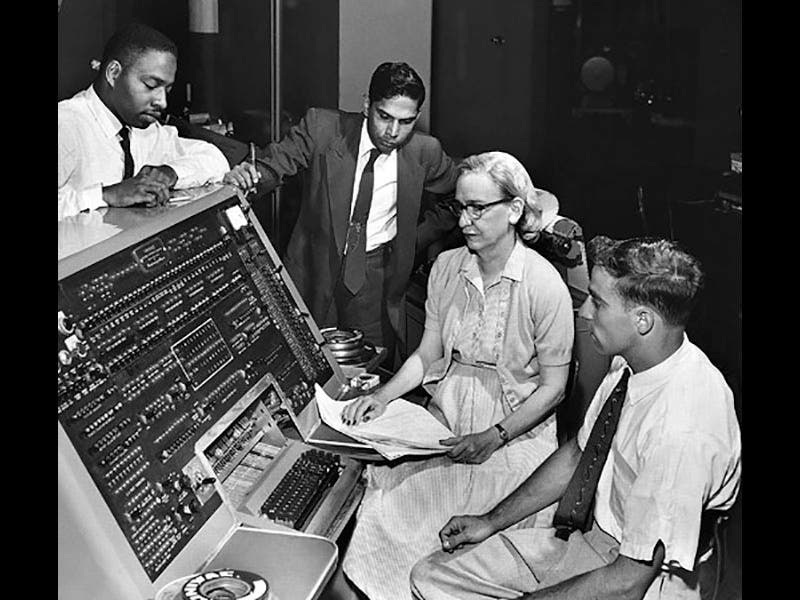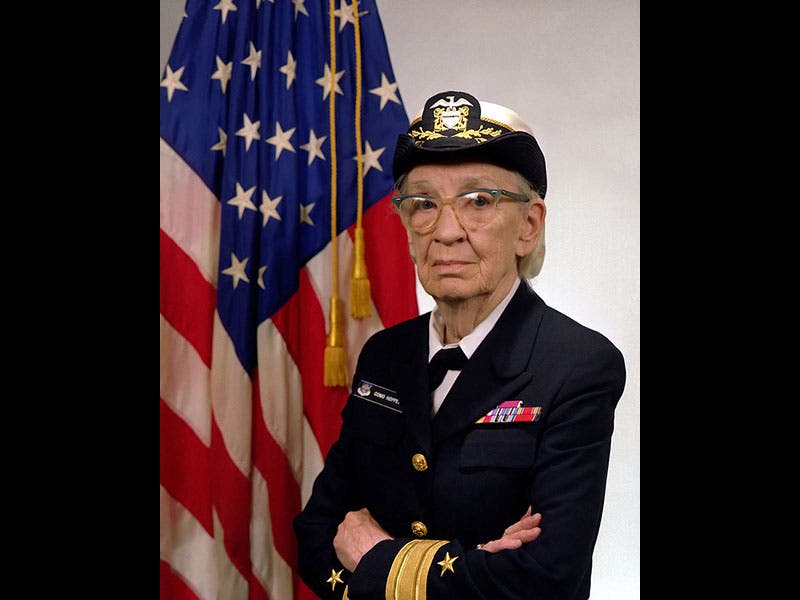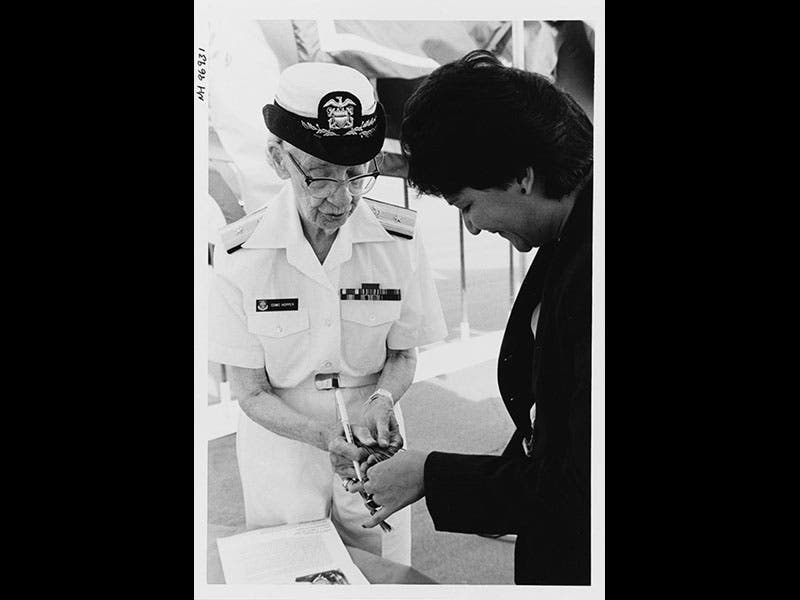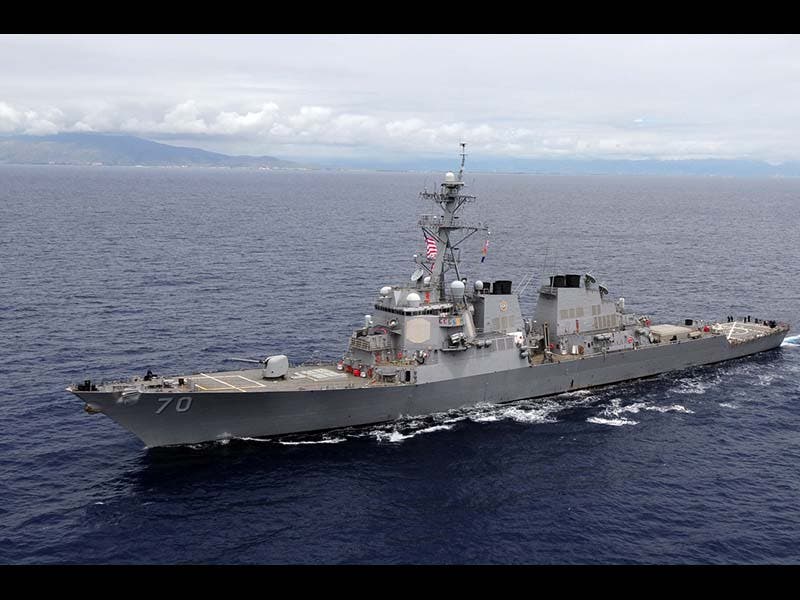Scientist of the Day - Grace Hopper
Grace Murray Hopper, an American Naval officer and computer scientist, was born Dec. 9, 1906. Hopper received her PhD in mathematics from Yale and was teaching at Vassar when she decided, in 1943, to enlist in the Naval Reserve to help the war effort. The Navy sent her to Harvard, where she was able to work with one of the early computers, the Mark I, a behemoth 50 feet long and 8 feet tall, crammed with relays and vacuum tubes, that could perform 3 additions per second. Hopper stayed in the Naval Reserve after the war but moved to the company that made UNIVAC computers, which was then bought by Remington Rand. While at Rand, Hopper developed COBOL, a computer programming language, released in 1960, that allowed programmers to program in English rather than binary code. COBOL is still in widespread use. The second photo above shows Hopper at a UNIVAC keyboard in about 1960.
Hopper worked until 1966, when she retired from both the Navy and private industry. The Navy, however, called her out of retirement in 1967 for 6 months, as a special adviser to the Navy's Automation Command, and her six-month reinstatement eventually extended to 18 years. When she finally retired for good at age 79, she had risen to the rank of Rear Admiral, one of very few women to hold that rank (third image).
In her later years, Hopper functioned primarily as a good-will ambassador, and she was apparently very effective at motivational speaking. One of her attention-getters was to hand out stiff pieces of surplus Bell telephone wire, each piece being 11.8 inches long. She called the wires her "nanoseconds", since that is the distance that light (or an electric signal) travels in a billionth of a second. She used the wires to make the point that computers need to be as small as possible to minimize signal travel time and to speed up operations. A photo from the Navy archives shows her distributing her nanosecond wires (fourth image)
Hopper is also famous for adding the word “debugging” to the computer lexicon. In 1947, a crew working on the Mark II under her supervision found a moth trapped in one of the relays. The actual log survives, with the culprit moth taped in its proper place (first image). The word "bug" had been used before for glitches of all sorts, but Hopper is said to have been the first to use the term "debugging" for the resolution of computer problems.
A Naval missile destroyer was commissioned in 1997 and named the USS Hopper. It’s nickname is the “Amazing Grace” (fifth image).
Dr. William B. Ashworth, Jr., Consultant for the History of Science, Linda Hall Library and Associate Professor, Department of History, University of Missouri-Kansas City. Comments or corrections are welcome; please direct to ashworthw@umkc.edu.

